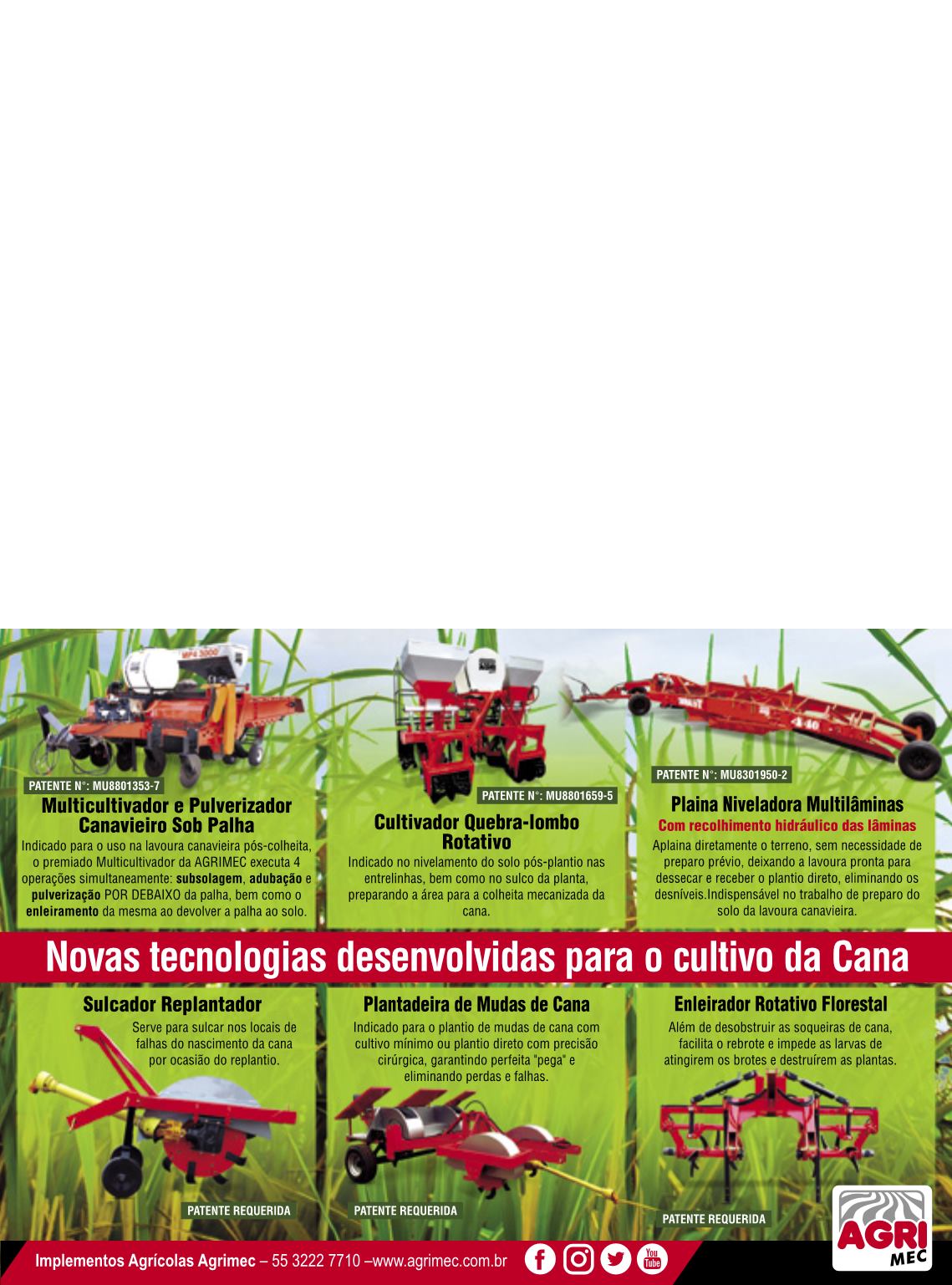
A
fter devoting thebiggest area to
the crop, the global sugarcane
leader should slightly reduce
the size of its cane fields for the
2017/18 crop year. Judging by
the initial estimates conducted by the Na-
tional Food Supply Agency (Conab), in April
2017, first month of the new season, the de-
creasing rate should remain around 2.8 per-
cent, particularly due to the reduction reg-
istered in the biggest sugarcane producing
region, the Center-South (almost 90 per-
cent of the total), which is supposed to af-
fect processing by 1.5 percent, but, even so,
will reach around 647 tons.
The smaller planted area in the region,
according to Conab sources, is believed
to be related to companies that have filed
for bankruptcy protection, and other addi-
tional factors present in the main produc-
ing states: São Paulo (with a drop of 4.5%);
Goiás (-2.4%) and Minas Gerais (-1.3%). The
latter two, however, were still supposed to
recover productivity, which would there-
fore remain positive in regional terms. Re-
covery would equally take place in the
Northeast and North, under expectations
of favorable weather conditions, so that, in
national terms, the physical performance of
the fieldsmight soar slightly (0.9%).
The estimate by the Brazilian Sugar-
cane Industry Association (Unica), jointly
with unions and associations of farmers in
the Center-South and with the Sugarcane
Technology Center (STC), in the month of
April, also referred to “a slight reduction in
area available for the crop” in the leading
sugarcane producing region in the Coun-
try, mapped at around 1.5 percent. Never-
theless, there was still a decrease in agricul-
tural productivity and, considering the two
factors, it projected a drop of 3.65 percent in
the processing of its newcrop.
The lower levels of productivity are
supposed to be the consequence of low-
er amounts of sugarcane left unharvest-
ed (from one year to the next), and sugar-
cane field aging. The reduction ascertained
by the organs in the cultivations ready to
be harvested is believed to be the result of
“cultivated area stagnation and bigger sug-
arcane renewal of 10 month old fields”. A
promising aspect, coming from a sampling
of 230 companies, is that the areawith new
plantings went up by 45.12 percent from
December 2016 to March 2017, compared
to the percentage registered in the same
period of previous years.
Anyway, the final result of the newcrop,
in March 2018, was still depending on sev-
eral factors. In July 2017, based on data of
the first three months in processing, Unica
confirmed the reduction in the process up
to that time and the STC ratified the small-
er productivity levels. Antonio de Pad-
ua Rodrigues, technical director at Unica,
commented that each month shows alter-
ations, but, at the endof the season, the ex-
pectation is for the numbers to get close to
the projected at the beginning of the peri-
od. He also ascertained, at a first moment,
a sugar-related trend, in line with Conab’s
prediction (with a share of 47%), but, in
light of new situations, the amount des-
tined for ethanol could go up.
n


